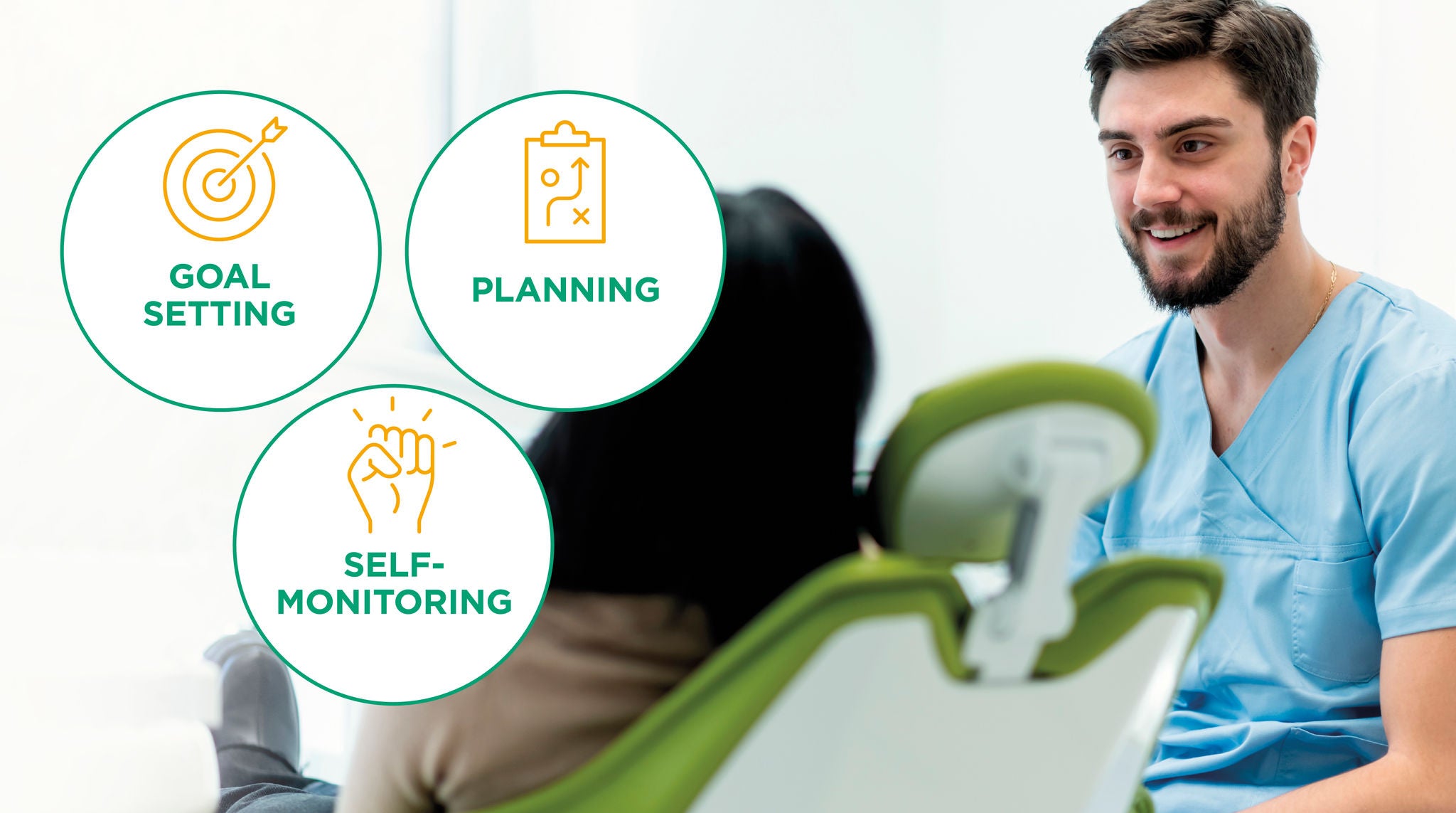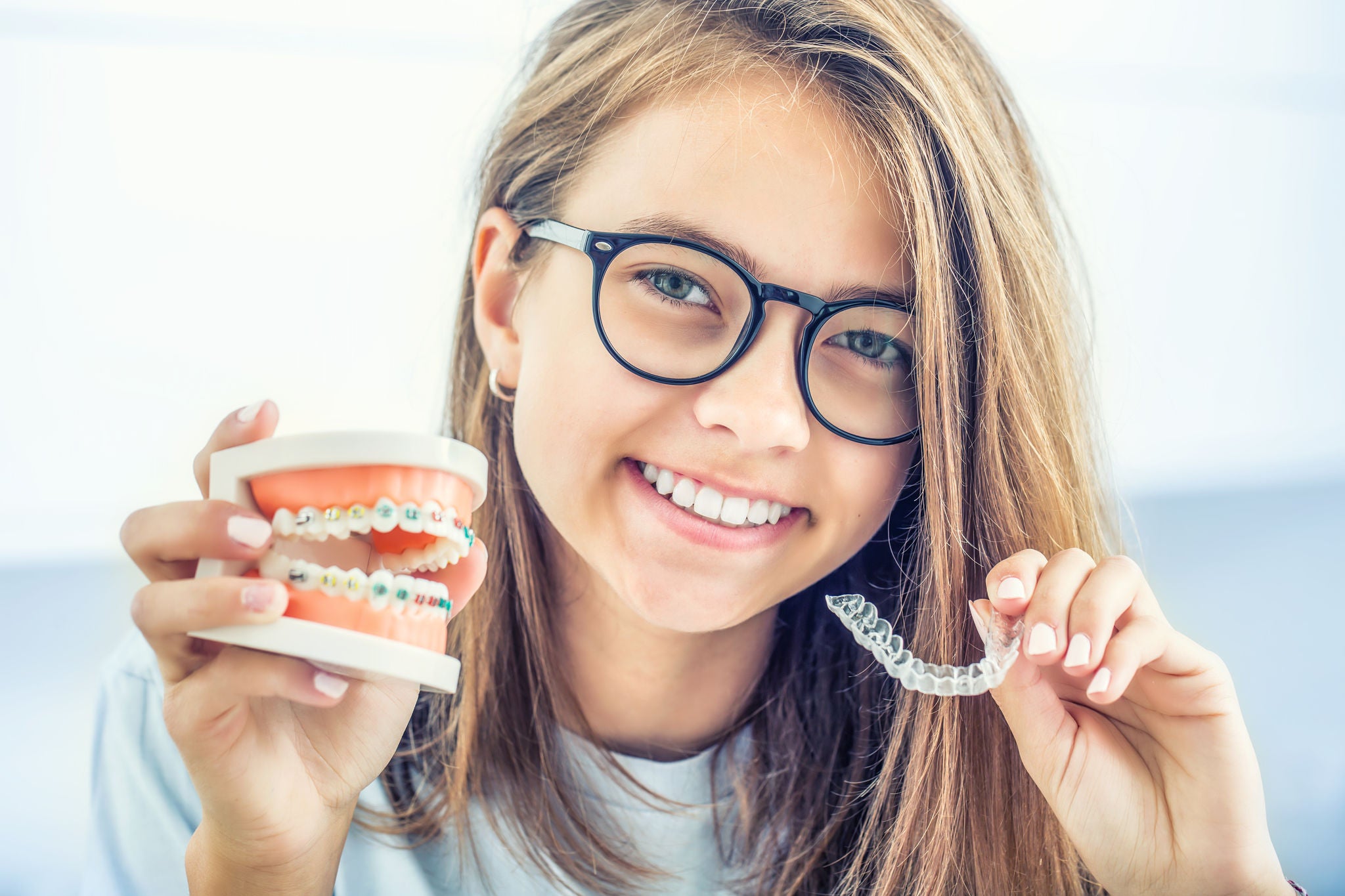
The Top Challenges for At-home Orthodontic Care, and How to Solve Them
Any dental professional knows that strong at-home oral care habits are essential to patient success. And anyone who operates in the field of orthodontics knows that the challenges around home dental care can be heightened for patients with these appliances.

It’s tough enough to drive compliance and imprint proper technique for those who have no impediments in the way of their brushing and interdental cleaning. Orthodontic appliances add another layer of complexity and can present a number of added considerations to deal with.
Grappling with these challenges in home orthodontic care was the subject of a recent “Let’s Talk Oral Health” webinar from SUNSTAR, where Dr. Martijn Verhulst (SUNSTAR Medical Liaison Manager) was joined by ortho experts Ms. Alina Fintineanu from Canada and Prof. Maria Cadenas de Llano Perula from Belgium for an in-depth discussion.
You can watch the webinar below, or keep scrolling to find key highlights and takeaways.
The impact of orthodontic care
It was clear from the discussion that both Ms. Fintineanu and Prof. Cardenas are passionate about their crafts. While acknowledging that braces and other appliances can be a sore subject (literally) for many patients, there is no doubting the tremendous value of these treatments toward excellent long-term oral health outcomes.
Ms. Fintineanu’s own personal experience as a youth helped shape her career path. She said she had “really bad teeth” as a child, and got braces at age 16. “Worst thing that happened to me – I didn’t want to smile.”
Then, she noticed the results. “When I saw my teeth straightening, the amount of confidence I got and the self-esteem growth... it was extremely life-changing for me,” she reflected. Ms. Fintineanu added that she’s now seeing a higher volume of adult patients receiving braces, and she gets deep fulfilment from seeing the way their confidence changes.
But driving the desired outcomes requires implementing the right measures and best practices at home. And that begins with cleaning and caring for the appliances themselves.
Cleaning and caring for orthodontic appliances at home
Ms. Fintineanu and Prof. Cardenas shared some of their best advice pertaining to three common types of orthodontic appliances: clear aligners, fixed appliances, and fixed expanders.
Cleaning clear aligners
“Aligners are very often forgotten when it comes to cleaning your teeth during orthodontic treatment,” said Ms. Fintineanu. “It’s common knowledge that one of the great assets of doing orthodontic treatment with clear aligners is the ease with which patients can keep their teeth clean, but the problem is patients are at a slightly increased risk of developing caries while they’re undergoing clear aligners treatment.”
The reality is that these aligners cover up many areas of the teeth, which can lead to incomplete cleaning and hidden food particles. Ms. Fintineanu says she’ll often look for teachable moments – when a patient comes in for a visit, and their aligner is full of food debris once removed, she’ll show it to them to illustrate the issue.
“The thing that’s missing when your aligners are on your teeth is the action of saliva,” she said. “So it’s very important to reinforce to your patients that they have to take their aligners out, brush their teeth and the aligners as well after every meal.”
The need to brush the aligners themselves is not always obvious to patients. “Sometimes people get surprised that they have to brush their aligners,” Prof. Cardenas noted. “It would be the same as taking a shower but not washing your clothes.”
When advising patients on cleaning their aligners, demonstrate how to guide the brush into all of the incisal edges and cusp tips, removing all plaque and debris. Emphasise that they shouldn’t use toothpaste for cleaning the aligner because its abrasive makeup can cause micro-scratches.
An added pointer from Ms. Fintineanu: for patients with a higher risk of cavities, recommend they brush with fluoridated toothpaste at night before bed, then pop in the aligner without rinsing to gain added protection. “Why not use aligners for more than they're intended for if it's not going to ruin or harm them?"
Cleaning fixed appliances
There are many different forms of fixed orthodontic appliances, which can be used in different areas of the mouth: buccal and lingual support on the teeth, fixed expanders on the upper jaw, fixed retainers, and so on.
“In general, for any type of fixed appliances, be very thorough to ensure no food is left behind, but also very careful so you don't detach any of the appliances that are in the mouth,” said Prof. Cardenas. Her specific recommendations are as follows.
- Buccal appliances: Remove additional supports like intermaxillary elastics or wax before brushing. Use a 45-degree angle (the modified Bass technique) to achieve coverage over the braces and underneath the bands. An interdental brush can help reach difficult areas beneath the wires.
- Lingual appliances: Although caries are less likely to develop on the lingual side of your teeth – in part because of the tongue’s role in cleaning – it’s still important to vigilantly clean appliances located here. Brush on top of the appliance and use an interdental brush to get underneath. Be sure to get all the way back to the last molars.
- Fixed expanders: An interproximal brush can be one of the best tools available for effectively cleaning expanders, according to Prof. Cardenas. Point your patients toward options with longer handles so they can get to the deepest nooks with ease. Assure patients that the brushes are soft and pain-free – discomfort will occur only if food is left behind and the gingiva begins to swell.
- Fixed retainers: People with retainers are at higher risk for plaque retention than those without. Promote extensive cleaning with a toothbrush and interdental cleaner. Also, if you provide orthodontic care for the patient, be sure to check during every visit if the fixed retainer has become detached on one or more teeth, and advise them to be hyper-aware of this because it can cause many unwelcome problems.
Even with an orthodontic appliance, most patients should be able to brush and clean every area of their mouth, even if it sometimes requires a bit of extra care. When a patient informs you they are struggling to clean between their teeth, you may want to “take your probe and walk it around the margins to make sure there’s no excess primer or bonding materials blocking interdental spaces,” Ms. Fintineanu said.
Avoiding white spot lesions and decalcification
Every orthodontist is familiar with white spot lesions. Many, like Prof. Cardenas, wish that they weren’t.
“I would love to live in a world where these lesions are not existing,” she said, “because they are a nightmare for patients and professionals as well.”
Alas, various studies have found white spot lesions to be relatively common for patients undergoing orthodontic appliance treatments, so awareness is critical. This condition occurs when plaque accumulates – often due to insufficient home oral care – and gets colonised by bacteria, creating acids that lead to demineralisation. The white spot lesions present with a chalk-like colour, whiter than the tooth enamel.
When it comes to white spot lesions, both experts were in full agreement: prevention is key.
While there have been studies on methods and processes to aid remineralisation and combat white spot lesions, the evidence is contradictory and unclear. “There’s not really a clear answer as to whether they work or not,” said Prof. Cardenas, “so the message remains: try never to get white spot lesions.”
Certain factors such as anatomy, histology and genetics can make patients more susceptible to developing white spot lesions, but in all cases, the basic best practices of at-home oral care will be the best bet in prevention. Strict adherence to the cleaning guidelines above, and avoidance of carbonated drinks or sugary foods should be mainstays.
It’s especially vital, said Ms. Fintineanu, to urge proactive care in the early stages of orthodontic treatment. She cited statistics showing that white spots lesions rapidly increase in the first six months of treatment, and that they can develop as quickly as four weeks.
Be clear about the dangers of white spot lesions in order to fully motivate patients. While Prof. Cardenas and Ms. Fintineanu were both sensitive to the idea of “fear-mongering,” there’s nothing wrong with plainly spelling out the severity of consequences.
“Something one of my professors told me is that all the information you give a patient before you start is information, and everything you say after you remove the braces is excuses,” Ms. Fintineanu said. “We can call it fear-mongering, but it’s the bare truth.”
Hypertrophic/hyperplastic gingiva
This condition affecting the gums served as the final topic covered in the webinar. It refers to an enlargement of the gingiva, which is driven by two primary causes:
- Hypertrophic gingiva: Larger cells in the gingival tissue.
- Hyperplastic gingiva: Higher volume of cells in gingival tissue.
In either form, it’s an issue that can bother and worry patients. Again, the main underlying cause is typically plaque accumulation leading to bacteria colonisation. However, there are several other factors that can play a role in this condition, including:
- Use of asthma medication
- Hormonal changes (common in adolescent patients and pregnant women)
- Breathing through the mouth
- Other dental conditions such as amelogenesis imperfecta
With this in mind, work carefully to understand the cause of hypertrophic or hyperplastic gingiva in patients. Don’t assume that poor oral care is responsible, as the patient might feel guilty even though they couldn’t have avoided the condition. This is especially important to keep in mind since such a large percentage of patients receiving orthodontic appliance treatments are at the peak of hormonal change (i.e. teenagers)!
We thank Ms. Fintineanu and Prof. Cardenas for joining us and sharing all of their excellent insight and advice. Hopefully their guidance helps you and your patients develop strategies for excellent home orthodontic care.


